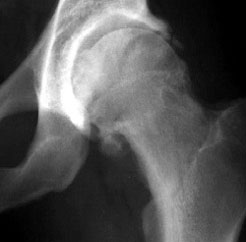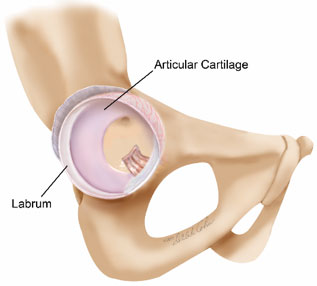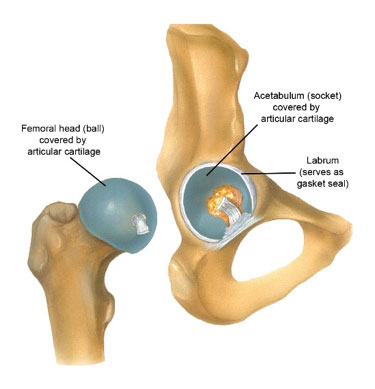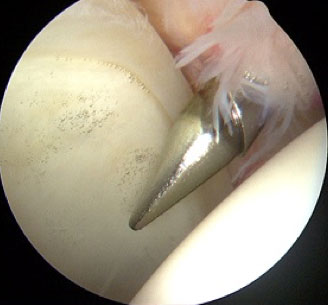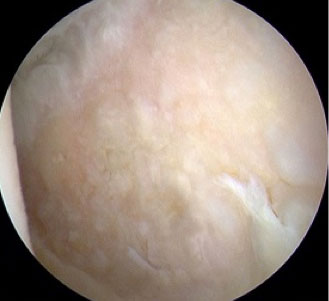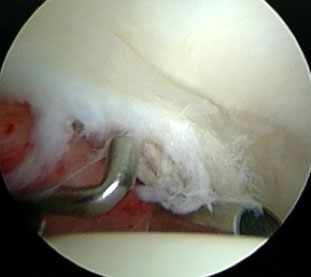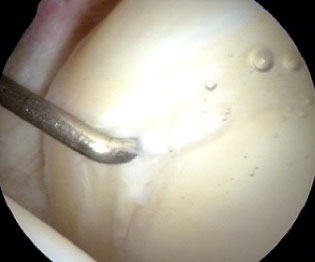The hip is susceptible to damage, deterioration, and subsequently arthritis due to a variety of conditions. Hip arthritis is just a catch-all term for the joint wearing out. It is characterized by painful restricted motion and, when severe enough, can benefit from a hip replacement.
The labrum and articular cartilage are the two main structures that can be damaged, causing pain and eventually leading to arthritis. Both of these are actually types of cartilage. The labrum is like a gasket seal or O-ring around the acetabulum (socket). Its most important function is to help evenly distribute weightbearing forces across the surface of the hip. The articular cartilage lines the acetabulum and the femoral head (ball part of the ball-and-socket joint) like a thick Teflon coating creating a smooth, frictionless surface. Uneven distribution with hotspots of contact leads to uneven wear and arthritis. It also has some importance in enhancing stability of the joint. The labrum is richly innervated with pain-sensing nerve endings so that labral tears tend to be quite painful.
Breakdown of the articular cartilage represents the earliest stages of arthritis, and it is the progressive wear of this cartilage surface that characterizes advancing arthritis. The articular cartilage has few nerve endings, so early on damage may not cause much pain. Only once extensive erosion occurs does this part start to be more noticeable.
On cross-section, the Labrum (L) is contiguous with the Articular Cartilage (A) at the rim of the Acetabular bone (B). The ligamentous Capsule (C) attaches to the bone, separate from the Labrum.
In the shoulder, the Capsule attaches with the Labrum, so tears are synonymous with instability. Labral tears in the Hip are more like Meniscus tears in the Knee. They cause pain, catching and locking, but not often instability. Neglect when painful, they can lead to arthritis.
Location
2004 Hayes Street
Suite 700
Nashville, TN 37203
Office Hours
Monday-Friday:
8:00 am – 5:00 pm
